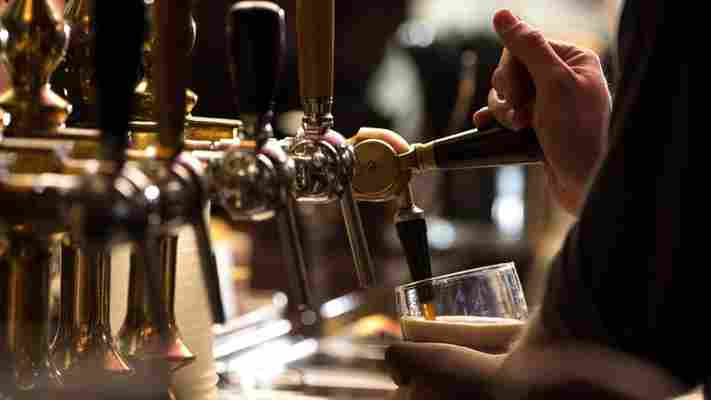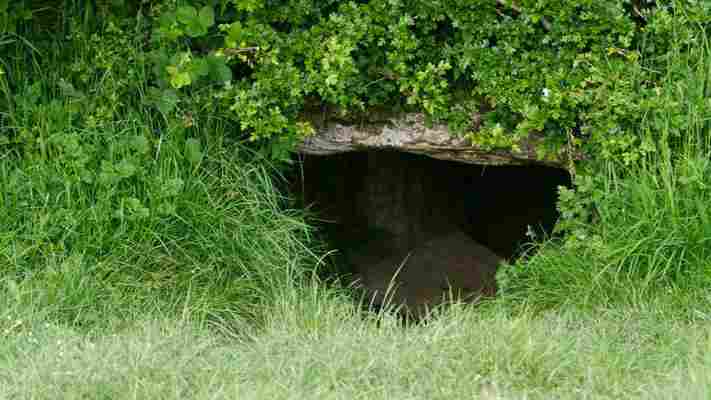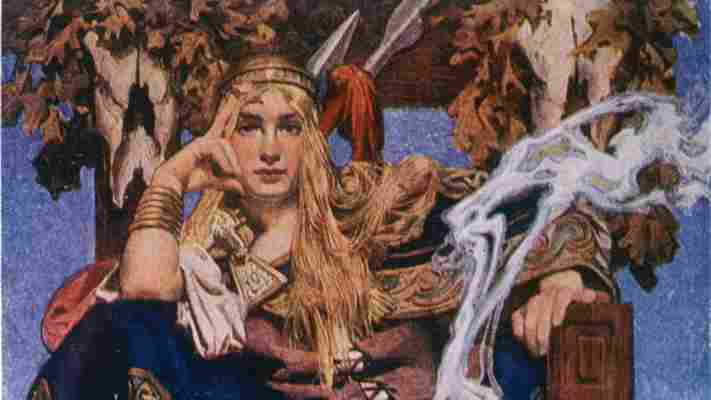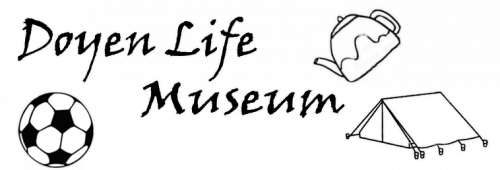Strange Brews

Strange Brews offers a taste of exceptional, exclusive beers from all over the globe.
Check back each week in December to discover new brew.
Oweynagat cave is a place of both birth and death. An unimposing gash in the ancient misty hills of north-western Ireland, it is said to be the entrance to the underworld where fairies and demons lure mortals to their doom, and the sacred birthplace of a warrior queen. For thousands of years, the Irish have regarded Oweynagat as a site of awe-inspiring magic, weaving a rich tapestry of mythology around it.
The story of the celebrated warrior Queen Medb is integral to said mythology. A beautiful, strong-willed woman known for her heroic role in the Cattle Raid of Cooley , Queen Medb was born in Oweynagat.
In ancient Ireland, Celtic men and women had equal rights, and whoever brought more wealth and property to a marriage was seen as the ruler of the household, regardless of sex. As the Queen of Connacht, Medb had to power to make kings of the men who married her, a power that was later mythologised when she became known as the ‘sovereignty goddess’. Medb’s name is the old Celtic word for ‘mead’, a fermented honey beverage that was an integral part of a king’s coronation ceremony in ancient and medieval Ireland. Queen Medb came to embody the symbolic offering of the beverage to the rising monarch.
But Medb’s name has another meaning – ‘she who intoxicates’ – and intoxicating, she certainly was. Celtic women, unlike their counterparts in other ancient European nations, were not bound by the rules of monogamy and were free to take lovers. Medb had many paramours, most of whom were high-ranking officials in her army. Their selection as the Queen’s lovers was based at once both in passion and in strategy. Having sexual relations with her soldiers ensured loyalty, and the promise of her love made them fight that much harder in battle.

Oweynagat cave in north-western Ireland is said to be the entrance to the underworld (Credit: Black Donkey Brewing)
You may also be interested in: • A beer brewed from an old Tasmanian shipwreck • A 4,000-year-old yoghurt • Why you should never drink whisky on the rocks
For millennia, Queen Medb has remained the most intoxicating thing to come out of the cave. However, just this year that changed with the creation of a beer made from wild yeast cultivated from the walls of Oweynagat. Called Underworld Savage Ale for the mythic place that it was conceived, this beer is the first of its kind, with a backstory strange enough to fit within the cave’s fantastic mythology.
Underworld Savage Ale by Black Donkey Brewery was born of the love for a good story. Last October, Black Donkey brewmaster Richard Siberry and a crew of microbiologists went on what they dubbed ‘a wild yeast chase’ in the cave, swabbing its walls and coming out with not one, but three distinct varieties of yeast.
One thing I knew for sure was I wasn’t going to be enjoying good beer
Siberry and his wife Michaela Dillon founded the brewery in 2014. After years living in New York, the two Ireland natives grew homesick and decided to move to County Roscommon, not far from where Dillon grew up. “I didn’t know what I was going to do when I got back to Ireland, but one thing I knew for sure was I wasn’t going to be enjoying good beer,” said Siberry, explaining that in spite of its beer-heavy reputation, most pubs in the Emerald Isle often only carry three beers on tap: Guinness, Smithwick’s and Heineken.
So Siberry took matters into his own hands, deciding to brew the beer he wanted to drink himself. Having been a hobbyist brewer during his stint in New York, he saw an opportunity in the relative dearth of microbreweries in Ireland, divining that the US craft beer craze would soon make its way across the Atlantic. Siberry did not want to mimic the style of American microbrews, however, deciding to break from popular IPAs and pale ales and focus on creating a singularly Irish beer.
To do that, Siberry turned his sights to the Rathcroghan complex , a breath-taking archaeological site located just 30 minutes from the brewery. Containing 60 monuments spanning from the Neolithic Age (4000 to 2500BC) to the Iron Age (500BC to 400AD), the complex has been identified as Cruachan, the ancient capital of Connachta and seat of West Ireland royalty for two millennia. Here was where druidic priests walked in contemplation, and where Gaelic kings fought in bloody battles to protect their sovereignty.

The mythical Queen Medb, who is said to be born in Oweynagat cave, was known as ‘she who intoxicates’ (Credit: Chronicle/Alamy)
But for all its illustrious history, Rathcroghan is best known for the Oweynagat cave, where the celebrated warrior Queen Medb was born and whose diminutive limestone mouth sits near the centre of the complex. A disproportionate amount of funerary and ceremonial monuments found at Oweynagat suggest that the cave was one of the most sacred sites within the complex.
During a meeting with Rathcroghan tourism officials, Siberry asked if it would be possible to age several barrels of ale inside the cave to see how the microbes within it might influence the recipe. Unfortunately this was logistically impossible as the cave’s opening is simply too small for a beer barrel to pass through. So Siberry decided to bring the cave to the beer by attempting to collect a wild yeast sample from within it. Equipped with sterile sampling supplies borrowed from a nearby university and, in Siberry’s words, “the love of a good story”, he and his team went into Oweynagat on Halloween of last year.
His choice of date was both brave and foolish if you believe the mythology behind Oweynagat, which in true Celtic tradition is dizzyingly complex – as frightening and unknowable as the underworld and celestial beings it describes.
Oweynagat cave is part of the Rathcroghan complex, which contains 60 monuments that date back to the Neolithic Age (Credit: Joe Fenwick)
These stories are the same as those told in the Rathcroghan complex thousands of years ago, before Christianity reached Ireland and when Halloween was still called by its original name: Samhain. According to Celtic mythology, Samhain is a time when the veil between our world and the spirit world is the thinnest, allowing preternatural beings to pass through certain portals and prey on mortals. In addition to being the birthplace of Queen Medb, Oweynagat was considered to be a passageway from which demonic pigs, fiery destroyer birds, a three-headed monster and even the Morrigan, the Celtic goddess of destruction, have been said to emerge.
In the tale of Fled Bricrenn, a story from the Ulster cycle, a collection of heroic sagas and legends taking place around the 1st Century BC, three enormous cats appeared from the cave to attack the hero and his men. It was from this story that Oweynagat got its name, which is Irish Gaelic for ‘the cave of cats’.
Though these myths are distinctive to Oweynagat, its label as an entrance to the underworld is not. There are three caves in Ireland, one of which being the famous St Patrick’s Purgatory in Donegal, that are said to be portals to the Celtic fairy realm or Christian hell. Tales surrounding these three mystical formations in Ireland spread across Europe during the medieval period, attracting pilgrims from the mainland, who, once arrived, would enter the ‘portals’ and spend several nights deprived of food, water and sunlight in hopes of proving their loyalty to God in the devil’s realm. Dante Alighieri, author of the 14th-Century literary masterpiece The Divine Comedy, was said to be inspired by these pilgrims’ accounts when writing Inferno, the most famous section of the epic poem.
Richard Siberry of Black Donkey Brewery used yeast collected from inside Oweynagat cave to brew a new type of beer (Credit: Hamish Fenton)
Undeterred, Siberry and crew followed in the footsteps of so many County Roscommon children who enter Oweynagat each Halloween on dares, crawling on their bellies through its narrow limestone mouth. Once inside they swabbed the walls and even took clippings of the flora within. When the cultures came back with the three yeast strains, Siberry sent them off to MiCRA Biodiagnostics, a research and development facility located at the Institute of Technology Tallaght, for testing. The microbiologists there verified that all three were safe for human consumption, but one person added after observation that they’d “never seen anything that grows quite like this before – it’s very exciting, and a little scary, too.”
After a trial period, the Black Donkey crew settled on one of the three strains, naming it ‘Morrigan no. 1’ after one of the cave’s most famous residents. The wild yeast, which, according to Siberry, is not used in any other beer on the planet, is central to Underworld Savage Ale’s unique taste.
“It’s a traditional kind of farmhouse recipe,” Siberry explained. “But what really stands out in it is the yeast and the flavours it creates.” The heart of Underworld’s palate, according to Siberry, is composed of fruits of the forest with a distinct streak of citrus cutting through earthy notes of blackberry, currant and rosehip.
According to Sibery, Underworld Savage Ale’s flavour profile includes citrus, blackberry, currant and rosehip (Credit: Isabella Ostelli/Alamy)
Underworld Savage Ale’s initial release was met with great success, but Siberry is not finished in his quest to create a wholly Irish beer. “We don’t produce any commercial hops in Ireland, but [Black Donkey Brewing] will probably research what Irish people used as a bittering agent in ancient times,” he said with enthusiasm.
Siberry reiterated that part of his quest for the wild yeast was “for the love of a good story”. It is also this aspect of Underworld Savage Ale that makes it so distinctly Irish. Conceived on the night when the veil between the spirit world and ours is thinnest, it is now a part of the rich history of Oweynagat cave.
Strange Brews is a BBC Travel series that invites you to indulge in one-of-a-kind beers from all over the world.
Join more than three million BBC Travel fans by liking us on Facebook , or follow us on Twitter and Instagram .
If you liked this story, sign up for the weekly bbc.com features newsletter called "If You Only Read 6 Things This Week". A handpicked selection of stories from BBC Future, Culture, Capital and Travel, delivered to your inbox every Friday.
